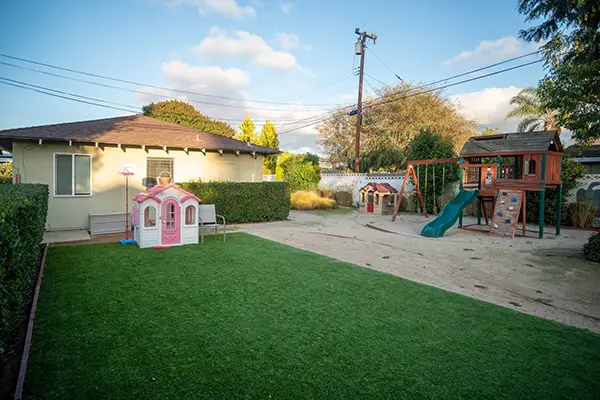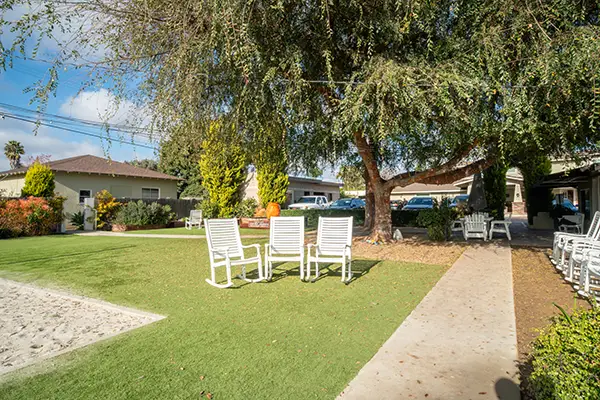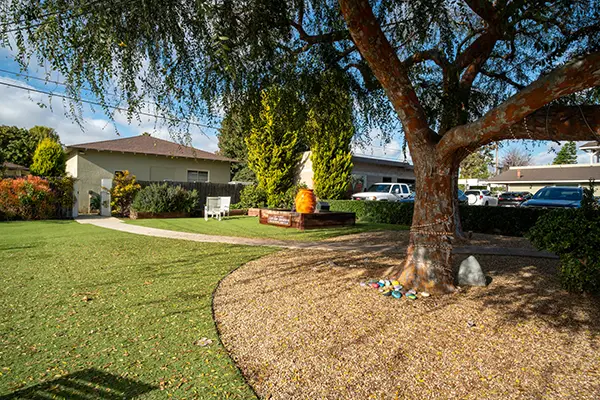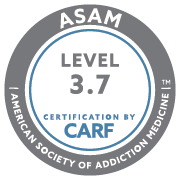The winter months can be a difficult time, especially for those who live in places with cold climates. It gets dark out early and, combined with the weather, it becomes more and more difficult to get out of the house and enjoy outdoor activities. This can cause people to feel sad or even depressed at times. While many people just chalk it up to the winter blues or the fact that it gets dark out earlier. However, this feeling is a real, diagnosable condition called seasonal affective disorder.
While seasonal affective disorder only affects roughly 5% of the population, it’s much more common in women than men and can be a debilitating condition. Many times, it goes untreated and can lead to other issues such as addiction due to many people turning to drugs or alcohol as a way to self medicate and combat the sad and depressive feelings. Let’s take a further look at what seasonal affective disorder is and how it can be treated properly, as well as some of the signs that you or a loved one might be suffering from it.
What Is Seasonal Affective Disorder?
Also known as SAD, seasonal depression, or winter depression, seasonal affective disorder is a diagnosable form of depression that is often associated with the type of season going on. People who suffer from seasonal affective disorder often suffer from the same symptoms as depression. While the symptoms usually occur during the fall and winter months when there is less sunlight, people have been known to suffer from it in warmer months as well. The most difficult months for people who suffer from SAD in the United States tend to be January and February.
SAD has been linked to a biochemical imbalance in the brain prompted by shorter daylight hours and less sunlight in winter. As seasons change, people experience a shift in their biological internal clock or circadian rhythm that can cause them to be out of step with their daily schedule. Seasonal affective disorder is most common amongst women, those living farther from the equator, and those who have family members who suffer from depression.
What Are Some of the Signs and Symptoms of Seasonal Affective Disorder?
While only roughly 5% of the population has been diagnosed with SAD, many more people might suffer from it and have no idea they even have it. That’s why it’s so important to know and be able to identify some of the signs and symptoms of seasonal affective disorder.

Some common signs that you might suffer from seasonal affective disorder include:
- Fatigue even with plenty of sleep
- Weight gain as a result of overeating
- Feeling constantly sad or depressed
- Loss of interest in once enjoyable activities
- Changes in appetite
- Having difficulty thinking or concentrating
- Thoughts of death or suicide
- Not being able to sit still
If you suffer from one or multiple things listed above during certain months out of the year, specifically the winter months, you might be suffering from seasonal affective disorder. It’s important to meet with your doctor and let them know how you are feeling before it is too late.
Is Seasonal Affective Disorder Manageable?
In short, the answer to this question is yes. Through certain treatments and things you can do on your own, seasonal affective disorder can be managed in a way where not only will it not take over your life but you won’t need to turn to drugs or alcohol as a way to combat it.
One of the most important things that you can do to manage it is to be conscious of its existence and not pretend that nothing is wrong. A great way to do this is by finding an activity that you enjoy doing that can be done regardless of the weather or the amount of sunlight and make it a priority to do that activity as often as possible.
Another important thing to do when it comes to managing your SAD is to know and understand the possible warning signs. When you see and feel that you’re starting to pull back, that’s when it becomes important to do something proactive to get yourself out of your “funk.”
Here are some other things that you can do on your own to help manage and ease symptoms associated with seasonal affective disorder:
- Set realistic goals for yourself
- Have a solid support system around that you can talk to
- Actively do things that will make you feel better such as doing an enjoyable activity or watching a tv show or movie that you enjoy
- Exercise and move around regularly
- Be patient when it comes to feeling better
- Make sure you’re eating a healthy, well-balanced diet
- Avoid things that will make your mood worse like drugs or alcohol
- Try to avoid making big decisions when feeling sad or depressed
- Don’t be afraid to ask for help
- Stay positive and focused on the big picture
For those people who continue to suffer from SAD, despite trying to combat it on their own, there are different treatment options available that your doctor or mental health professional might recommend. It is important when meeting with your doctor to be as open and honest as possible so that they can select the treatment option that is best for you and your needs. Not being honest with your doctor not only prevents them from doing their job, but it also prevents you from getting the proper help that you need.
Can Seasonal Affective Disorder Be Treated?

In addition to some of the things that you can do on your own to counteract your seasonal affective disorder, there are also certain treatments that you can undergo to combat SAD. While one of the ways it can be treated is through the use of antidepressants there are several other treatment options that involve no medications at all. Let’s take a look at some of those treatment options that don’t involve the use of medication.
Light Therapy
One of the biggest reasons found for suffering from seasonal affective disorder is the lack of sunlight available during daytime hours. One way to combat that natural sunlight is through the use of light therapy.
Light therapy involves sitting in front of a light therapy box that emits a very bright light for at least 20 minutes a day during the winter months. While undergoing light therapy, a person will sit about 2 feet away from the bright light. Light affects the biological clock in our brains that regulates circadian rhythms, and exposure to light during light therapy can have an antidepressant effect. While light therapy might not work for everyone, some people have been known to recover from SAD in a matter of days or even weeks after undergoing light therapy.
Cognitive Behavioral Therapy
Another type of therapy that has been successful in treating seasonal affective disorder is cognitive behavioral therapy (CBT). CBT is a type of talk therapy that is done with a mental health professional. Cognitive behavioral therapy targets thoughts and behaviors that may be getting in the way of feeling better. The cognitive part focuses on examining and challenging negative thoughts, and the behavioral part focuses on scheduling positive and pleasant activities.
Many people who suffer from SAD fall into a negative path and have trouble getting out of it. This can then cause them to feel even more sad and depressed. Actively doing things to improve your mood can go a long way when it comes to successfully treating seasonal affective disorder.
Do You Suffer From Seasonal Affective Disorder?
If you or someone you know suffers from seasonal affective disorder, it’s important to know that it’s OK and help is available. Many people are too embarrassed or ashamed to ask for help and unfortunately turn to drugs or alcohol as a way to self-medicate. While this might work for a short amount of time, doing this will ultimately cause more harm than good. Not only can it lead to symptoms eventually getting worse, but it can also lead to health issues and addiction.
At New Directions for Women, we know that women are much more likely to suffer from seasonal affective disorder than men do. We also know the best ways to treat women since we are a facility that is dedicated to specifically helping women of all ages. If you think you might be suffering from seasonal affective disorder and could benefit from one of our many treatment options, contact us today. Don’t let your seasonal affective disorder control your life for even another day.












